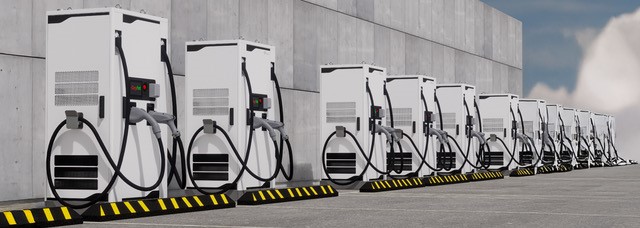The challenge
Menzies are striving to progress their global Ground Service Equipment (GSE) strategy in line with their Net Zero sustainability plan. Menzies has announced that the ‘Science Based Targets Initiative’ (SBTi) has approved its targets to reach net zero greenhouse gas emissions across the value chain by 2045. It said its plan “includes a 50% near-term reduction in scope 1 and 2 GHG emissions by 2030 from its 2022 baseline, and in scope 3 GHG emissions of between 30% and 42% within the same timeframe.”
AiQ were asked by Menzies to help them devise an electric replacement strategy for their white fleet and their GSE fleet at Heathrow.
The solution
The project was split into two phases. Firstly, the focus was on their white fleet. AiQ presented Menzies various electric options – five different options for cars and five different options for vans. Analysis and comparisons were made on various factors such as range, charging times and price and the best and most viable option was presented.
A transition plan was devised and presented to the Menzies management team at Heathrow covering the net zero targets to 2030.
Phase two of the project was GSE fleet and equipment. There are a lot of electric options available on the market for cars and vans, this is not so much the case with GSE. Menzies supplied AiQ with a Vehicle Apron Pass (VAP) list which represented their current fleet and all their GSE equipment. AiQ then identified the different types, put them into categories such as pushback tugs (narrow body and wide body), lifters, and then researched electric options for each. Input was provided by some of the Menzies team and different suppliers such as TCR Group, Rushlift, etc.
Again, similarly to the white fleet phase AiQ researched, compared and analysed various options and presented them back to the Menzies team. In the absence of tried and tested options of eGSE vehicles, assumptions on usage and range had to be made thus causing a change in methodology and analysis.
One of the other overarching issues with eGSE is that there are not many options available as there are for white fleet. This can restrict the charging capability if there’s only one type of eGSE available.
What became apparent was that the main consideration for GSE handlers like Menzies is the need for them to coordinate very closely with the airport before making any kind of concrete plans for their replacement strategy. Planning and budgeting for electrification of their fleet is very much dependent on the airport not only being able to provide the sufficient number of chargers and those chargers being available in the right locations but also the type of chargers – rapid chargers or AC chargers which are slower.
It’s certainly a challenging problem for the handlers because this effects their own carbon neutral strategy and their own transition plans while they also need to comply with the airport’s Net Zero programme.
AiQ have given Menzies a solid plan of how to transition to electric over the next few years but coordination and communication with the airport is critical.
The benefits
- Solid plan for CO₂ emissions reduction
- Accurate data input into their Science Based Targets Initiative (SBTi)
- Accurate timescales and costs for the CO₂ emissions reduction plan
- Supporting the Heathrow Airport Sustainability plan
- A clear plan with Heathrow for the charging infrastructure needed
- Use of data to provide an effective plan for the purchase of electric vehicles
- Contribution to Menzies sustainability plan
- Clear comparisons and evaluation of options for future decision making
Our award winning team of operational and analytical experts are dedicated to analysing, modelling and optimising every aspect of an airport. Specialising in airport capacity, we are trusted to realise capacity and solve complex operational challenges. For more information about how we can assist you with any of your challenges in 2025 and beyond, contact us today.

